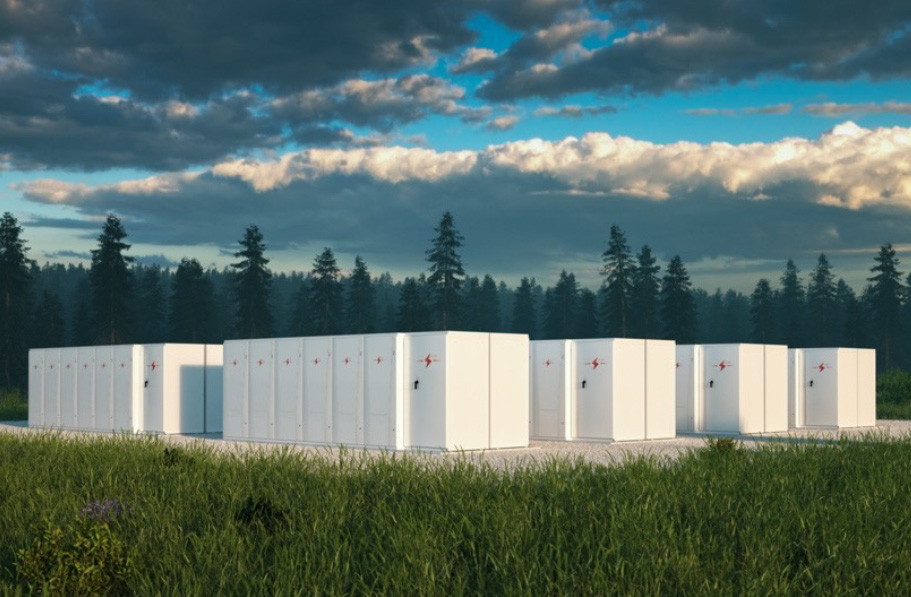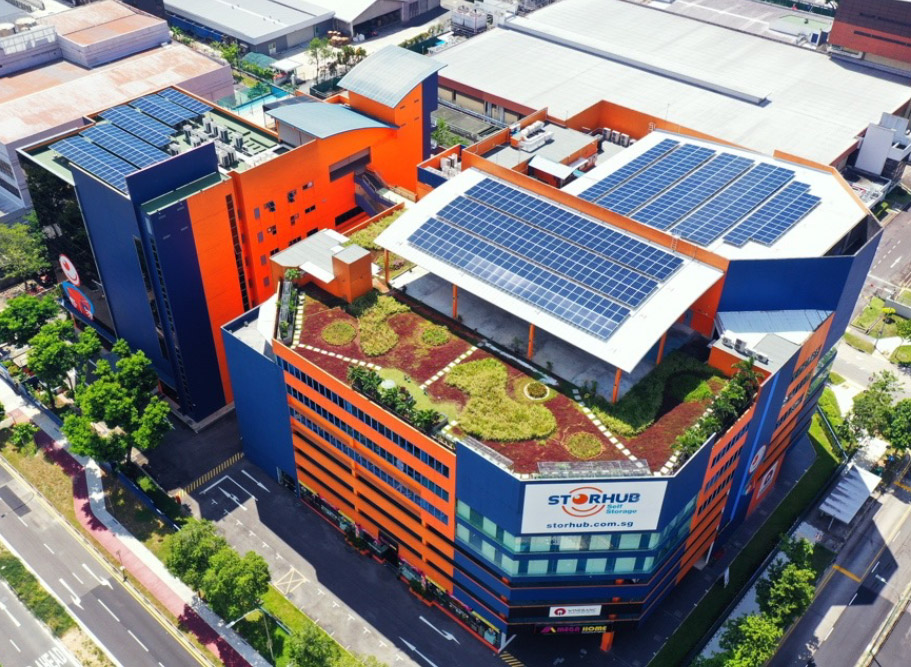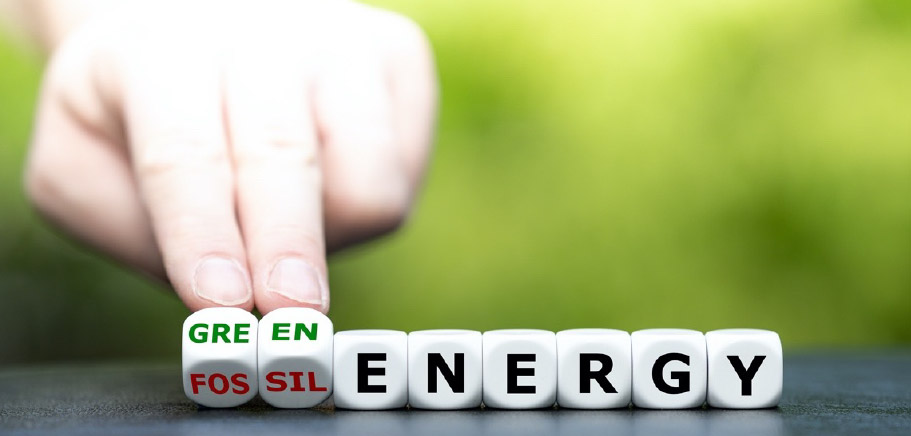
By Shauna
April 5, 2022
With nations racing to lessen their reliance on fossil fuels, the demand for renewable energy has soared in recent years.
Amongst the range of renewable energy sources, solar energy has two unique attributes that set it apart from the others: accessible technology and decentralised citizen-driven uptake from rising eco-consciousness. According to a study conducted in 2019 by Pew Research Centre in the United States, the share of homeowners considering solar panel installations on their rooftops was up 40% since 2016 due to these factors.
Yet, while there is a marked increase in receptiveness towards solar energy, there are still certain limitations when going solar. We explore these limitations along with the solutions that help to bridge the gap.

Image of StorHub, which has installed EDP Renewables’s solar energy systems across nine of its facilities to generate renewable energy.
Shaking Up The Energy Market – The Rising Popularity of Solar Energy
The rapid growth of solar energy in recent years has breathed hope into global efforts to reduce greenhouse gas emissions and limit the most dangerous effects of climate change. In the last decade alone, the solar industry has experienced an average annual growth rate of 42%, according to research by the Solar Energy Industries Association in the United States.
This exponential growth is driven by a myriad of factors, namely falling installation costs, advancements in technology and improvements in manufacturing and supply chain management, to name a few.
However, while growth has been rapid, it is undeniable that the key limitation of solar installations is their intermittency because of their dependence on the weather. Solar panel installations only produce electricity when the sun is shining. Yet, these periods of sunny weather may not coincide with peak energy usage, which leads to an issue with supply and demand.
To reap the full benefits of solar energy, we must store some of the energy when it is generated and use it during peak demand. One way to do this is with energy storage in the form of batteries.

Round-The-Clock Clean Energy
Energy storage battery technology is the key to success in our carbon-constrained world. In simplest terms, energy storage enables electricity to be saved for later, when and where it is most needed.
By introducing such flexibility into the grid, energy storage enables the optimal use of variable electricity sources, such as solar energy, while ensuring an uninterrupted electricity supply. It can also improve the efficiency of the grid – increasing the capacity factor of existing resources – and offset the need for building new pollution-emitting peak power plants. As our energy supply mix gets cleaner with low- and no-carbon resources, energy storage helps that supply mix evolve more easily and reliably with increased energy resilience and the balancing of electric loads to meet energy demands.
The International Renewable Energy Agency (IRENA) recently conducted an analysis which illustrates how electricity storage technologies can be used for a variety of applications in the power sector, from e-mobility and behind-the-meter applications to utility-scale use cases. Batteries used for utility-scale or grid-scale projects have capacities that are up to several hundreds of megawatt-hours. These batteries can be used for many purposes, such as in grid-connected storage systems that help mitigate grid congestion and blackouts.

Image of Energy Storage System in Marsiling (Singapore), consisting of 2.4 megawatt-hours of battery energy storage.
Types of Batteries In Energy Storage Systems
Most, if not all energy storage systems use batteries. There are many different types of batteries used in battery storage systems and new types of batteries are constantly emerging in the market.
1. Lithium-ion Batteries
First commercially produced by in the 1990s, lithium-ion batteries were originally used primarily for small-scale consumer items such as cell phones. Recently, they have been used for larger-scale battery storage and electric vehicles. At the end of 2017, the cost of a lithium-ion battery pack for electric vehicles fell to $209 per kilowatt-hour, assuming a cycle life of 10-15 years. Bloomberg New Energy Finance predicts that lithium-ion batteries will cost less than $100 per kilowatt-hour by 2025.
Lithium-ion batteries are by far the most popular battery storage option today and control more than 90 percent of the global grid battery storage market. Compared to other battery options, lithium-ion batteries have high energy density and are lightweight. New innovations, such as replacing graphite with silicon to increase the battery's power capacity, are seeking to make lithium-ion batteries even more competitive for longer-term storage.
2. Lead-acid Batteries
Lead-acid batteries were among the first battery technologies used in energy storage. However, they are not popular for grid storage because of their low-energy density and short cycle and calendar life. They were commonly used for electric cars, but have recently been largely replaced with longer-lasting lithium-ion batteries.
3. Flow Batteries
The chemistry behind flow batteries has long been proven in the power industry and most analysts agree they are ideal for long-duration energy output with very low degradation of components within larger, utility-scale deployments.
With life spans reaching up to 30 years, depending on the electrolyte chemistry, flow batteries may provide unrivalled cost certainty versus other emerging storage technologies on the market. Though flow batteries currently represent a higher upfront capital investment than a similar-sized lithium-ion configuration, they become more competitive when evaluated on a total cost of ownership over a 20- to 30-year lifecycle. Moreover, costs are dropping for flow batteries as technology advances and manufacturing efficiencies are implemented.
4. Solid-state Batteries
Solid state batteries have multiple advantages over lithium-ion batteries in large-scale grid storage. Solid-state batteries contain solid electrolytes which have higher energy densities and are much less prone to fires than liquid electrolytes, such as those found in lithium-ion batteries. Their smaller volumes and higher safety make solid-state batteries well suited for large-scale grid applications. Yet, solid-state battery technology is currently more expensive than lithium-ion battery technology because it is less developed. Fast-growing lithium-ion production has led to economies of scale, which solid-state batteries will find hard to match in the coming years.
5. Hydrogen Fuel Cells
While rechargeable batteries are commonly used for renewable energy storage, batteries are only viable for short-term storage. For longer storage – from overnight to seasonal – the best solution is hydrogen supported by fuel cells. Yet, while hydrogen fuel cells pose as viable alternatives to the lithium-ion batteries, infrastructure for hydrogen fuel cells are still lacking in many countries.
It was just last year that Australian engineers designed the world’s first integrated hybrid hydrogen battery for homes that combines with rooftop solar to deliver sustainable, reliable and renewable energy for residential and commercial properties. The hydrogen battery system works by converting surplus electricity from a residential rooftop solar array into hydrogen and oxygen using an electrolyser to split water and storing the hydrogen in a solid state in silver hydride tanks. When electricity is needed, the stored hydrogen is re-electrified for use via a fuel cell.
While hydrogen batteries do have a leg up over the traditional lithium-ion configuration – for instance, they can last three times longer than lithium-ion ones – the technology is still a novel innovation in the energy storage industry. As such, they come with hefty price tags due to a lack of infrastructure and availability, being priced around three times the price of traditional lithium-ion batteries.
EDP Renewables's Energy Storage Systems
In 2020, EDP Renewables (known as Sunseap then) led a consortium comprising Nanyang Technological University (NTU) and Wärtsilä, a global provider of technologies and solutions for the energy and marine markets, to participate in a test-bed for a utility-scale energy storage system (ESS).
The consortium deployed 2.4 megawatt-hours of battery energy storage at the substation along Marsiling Lane in Singapore using a lithium-ion battery system that was designed and supplied by Wärtsilä.
EDP Renewables, as the principal investigator of this test-bed, was responsible for the management, installation and operation of the ESS. NTU as the co-investigator and research partner carried out data collection and analysis using machine learning to build models to predict battery safety and health. The test-bed is one of the first to assess how ESS performs under hot and humid conditions, as well as the space and safety issues associated with deploying ESS in Singapore's dense urban environment.
Data gathered from the test-bed will help make informed decisions about how ESS can enhance the stability of the national grid, provide additional capacity quickly and improve operational flexibility. The information will also be used to facilitate the establishment of standards, guidelines and policy frameworks for the deployment of ESS in the electricity market.
The increasing adoption of renewable energy and the evolving power grid represents a considerable opportunity for battery energy storage technology. The acceptance of renewable energy targets, improvements in the grid, and decommissioning of outdated power plants contribute to the implementation of energy storage systems. As we continue to generate more energy from renewable, intermittent sources, energy storage solutions and management systems are necessary to ensure the continuous supply of electricity we have become accustomed to.